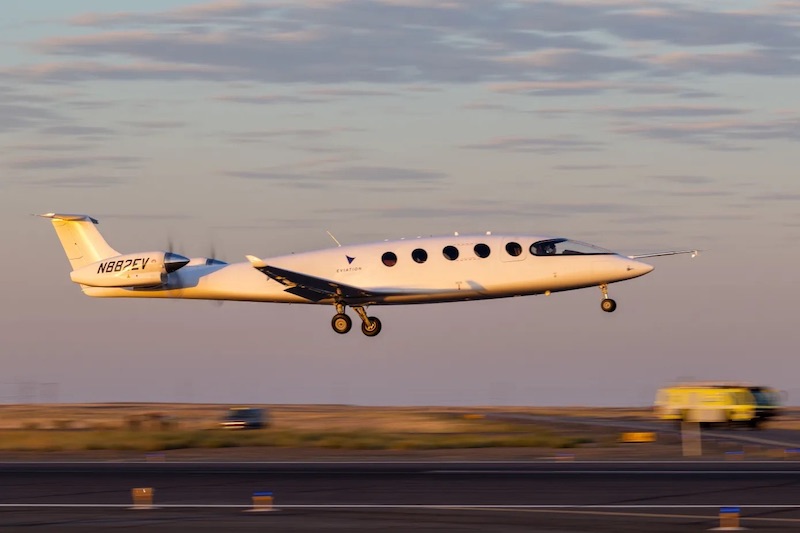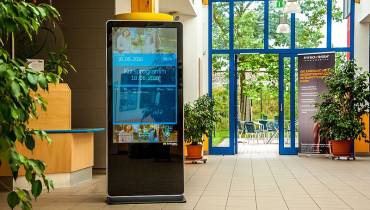The Future of Electric and Hybrid GSE in Aviation

Caribbean Airlines Boeing 737-800 at Airport with GSE operations underway. Photo: Chris Fitzpatrick / Wikimedia.
Not only are electric cars and trucks hitting the market, but this technology is playing an increasing role in aviation as well. The electric and hybrid tech is playing a critical role in reducing humanity's ecological footprint in travel and the aviation sector as well.
Ground support equipment (GSE) refers to the support equipment found at the airport. GSE operations entail the use of ground vehicles and machines to aid in the many ground handling services at the airport from the time a passenger aircraft arrives to the time it departs for its next flight, including cargo/passenger loading operations and aircraft mobility.
One of the ways the aviation industry is aiding the efforts to reduce pollution emitted from airport operations is by introducing electric vehicles and equipment into GSE operations. This has had a big impact in helping to reduce the high levels of pollution notoriously emitted in the sector.
Key Facts and Impact of Electric GSE in Aviation
Some of the most important facts about GSE and impact of electric GSE in the aviation industry you should know about are:
1. Electric GSE Significantly Reduce Fuel Costs
Electric ground support equipment have become integral in modern airports for their fuel efficiency. As the years go on, you can expect more airports to begin using these eco-friendlier electric ground support vehicles in addition to hybrid aviation engines,
A few examples of reputable manufacturers of the most popular electric GSE makes and models on the market today are:
- Eagle Tugs
- Towflex
- Priceless Aviation
Eagle Tugs, for example, offer a range of all-electric and hybrid GSE, including airport towing vehicles, that are quite fuel efficient. You can inquire about Eagle Tug parts by calling 800-426-6301.
2. Hybrid Engines Are Increasingly Being Used in Aviation
Conventional aircraft propeller and jet engines use a large amount of fuel, which leaves a substantial ecological footprint. Furthermore, conventional propellers can be very costly. In fact, a full tank of fuel for a commercial flight costs approximately $7,000.
Many aircraft manufacturers have begun creating hybrid aircraft engines that are much more fuel-efficient and eco-friendlier, including big aircraft manufacturers like:
- Boeing
- Airbus
- Wright Electrical
- Siemens
- GE Aviation
3. World's First All-Electric Jet Has Already Been Created

Eviation’s Alice electric aircraft. Photo: Eviation.
An Israeli company called Eviation created an all-electric jet named Alice in February of 2022. This electric aircraft engine is able to propel a jet aircraft without the use of jet fuel.
While commercial airlines are not yet using this electric tech, it has been successfully tested and considered viable. Not only is it eco-friendly with zero-emission, but it's also exceptionally quiet.
4. Electric Jets Are Quieter than Conventional Aircraft
Building on the previous point, it is worth noting that hybrid and electric jets are much quieter than conventional jet engines. This helps to reduce noise pollution, including loud noise exposure for ground control workers, which can be detrimental for these airport workers.
In fact, a fully electric jet can be as much as 100 times quieter than a conventional one.
5. Electric Plasma Jet Engines Use Plasma Instead of Jet Fuel
While plasma jet engines have long been used in spacecraft, they're now being utilized by many major aviation companies. In the past, these engines were only designed to work in environments without air resistance, which made them only applicable to spaceflight.
However, newer plasma jet engines propel gas at a higher velocity, and this makes them useful within the atmosphere. In addition, this technology is used to propel satellites and spacecraft.
6. Lilium Set to Launch a Jet with Vertical Takeoff and Landing Capabilities
A company called Lilium has recently unveiled its plans to create the first electric jet that has vertical takeoff and landing capabilities. This one-of-a-kind aircraft will be able to transport a small number of passengers.
Not only does it offer zero emissions and minimal noise, but it also features a unique space-age design. In addition, it has an efficiency of 36 kilowatt hours, which makes it one of the most efficient electric jets on the market.
7. Traditional Jet Engines Still Power 95% of Aircraft
Currently, electric jet engines are far less common than conventional ones. However, this is likely to change as the years go on.
In fact, it's possible that electric jet engines will become more common than petroleum ones in the future, and these technologies are likely to become increasingly efficient over time.
8. Electric Jet Engines Will Make It Possible for Aircraft to Leave the Atmosphere
Engineers have been working for years to create an aircraft that can carry passengers into space, and electric jet engines will play an integral role in making this happen. That's because electric plasma engines are highly efficient within and outside of the atmosphere.
In Conclusion: Electric-Petroleum Hybrid Engines are Revolutionizing the Aviation Industry
Many airlines are reducing their ecological footprint by switching to electric-petroleum hybrid engines, and many others are likely to follow in their footsteps. In time, this technology will likely become increasingly widespread, which will play an important role in saving the planet.




















